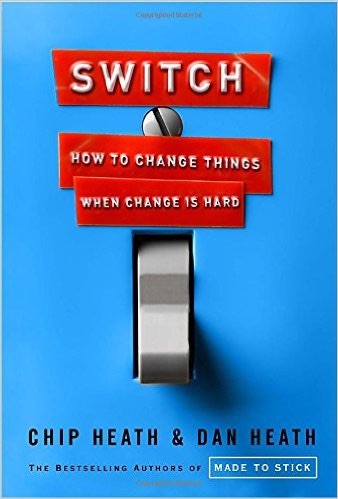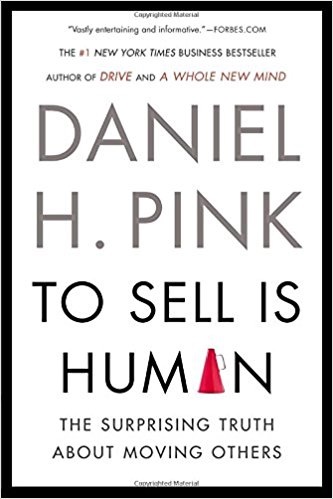Hello from EduCon 2.5 in Philadelphia. On January 26, 2012 I lead a conversation with thirty educators titled: Leading When the King has no Clothes: What do teachers and leaders do while we wait for policy makers to discover that the test culture they have created is a mistake? Everyone agreed that there are a number of negative results from testing required by the federal government. With that in mind, we went on to suggest things that we could do to minimize the negative impact on students and teachers. The following pages include our work from the perspectives of five different constituents. If you can add anything, send me and email and I will add it. dgreen@stny.rr.com
Author Archive
What to do until the tests go away – EduCon 2.5
Sunday, January 27th, 2013Switch: How to Change Things When Change is Hard by Chip and Dan Heath
Friday, January 25th, 2013

Switch: How to Change Things When Change is Hard by Chip and Dan Heath deals this one of the most important topics faced by any leader and everyone else. They believe that the primary obstacle comes from conflict built into our brains. They explore this conflict between our rational brain and our emotional brain that compete for control. This book will help your two minds work together. It draws on decades of research from multiple fields to shed new light on how you can effect transformative change. Discover the pattern they have found and use it to your advantage. Click below to purchase this important book.
The Heath Brothers
- Chip Heath is a professor at the Graduate School of Business at Stanford University. Dan Heath is a senior fellow at Duke University’s Center for the Advancement of Social Entrepreneurship (CASE). They are the authors of the bestseller Made to Stick and a new book Decisive: How to Make Better Choices in Life and Work also summarized here.
I just added a summery of thier 2018 book The Power of Moments.
Introduction
- All change efforts have something in common: For anything to change, someone has to start acting differently. All change effort boils down to the same mission: Can you get people to start behaving a new way? First surprise: What looks like a people problem is often a situation problem. To change someone’s behavior, you’ve got to change that person’s situation.
One Brain – Two Minds
- Human brains have their emotional side and their rational side. You can think of the two sides as the planner (rational) and the doer (emotional). In this book, the Heaths use an analogy they borrowed from Jonathan Haidt in his book The Happiness Hypothesis. Here, the emotional side is the Elephant and the rational side is the Rider. When the two sides disagree, the six-ton Elephant is going to win. If you want to change things you need to appeal to both the Rider and the Elephant. The Rider does the planning and the Elephant provides the energy. The Rider provides the direction, the Elephant provides the passion.
How To Deliver a TED Talk: Secrets of the World’s Most Inspiring Presentations
Wednesday, January 23rd, 2013How To Deliver a TED Talk: Secrets of the World’s Most Inspiring Presentations (© 2012) by Jeremey Donovan, gives you a step-by-step guide to doing your own inspiring TED-style presentation. If you haven’t seen a TED Talk it’s time to start. Click the icon below to purchase this quick, quality read.
To Sell Is Human: The Surprising Truth About Moving Others by Daniel Pink
Sunday, January 6th, 2013

To Sell Is Human: The Surprising Truth About Moving Others by Daniel Pink is a fresh look at the art and science of selling, which is something we all do. If you want to better understand others’ perspectives, make your message clearer and more persuasive. Click below to purchase this book. It is purposeful and practical and may change how you see the world as it transforms what you do at work, at school, and at home.
Introduction
- Over the years, people in sales have often been seen as intellectual lightweights and dodgy characters. Even though 9% of us work in direct sales, some view it as the white-collar equivalent of cleaning toilets. The truth is, however, we are all involved in sales. We are all constantly trying to persuade, convince, and influence others. Studies show that collectively we are devoting 40% of our time on the job trying to move others. Even people in education and medical fields (Ed-Med), which are part of the fastest growing industries, engage in sales-like activities every day. As a result, non-sales selling is far more prevalent than selling in a traditional sense. People also consider this one of the most critical components in their professional success.
Entrepreneurship, Elasticity, and Ed-Med
- Entrepreneurs understand that segmenting job functions doesn’t always work. As small businesses proliferate, more people must have an elastic skill set, which includes a sales component. The U.S. even has more than twenty-one million people who are self-employed and therefore, have to sell themselves, and this number is growing. The Internet has knocked down barriers to entry by small operations. For example, the number of Etsy online shops is approaching one million. Kickstarter has helped people raise over $200 million to get projects off the ground, and smartphones can accept credit cards anywhere. Even bigger businesses are getting flattered with fewer people doing more varied things.
Ed-Med
- Jobs in education and medical care have increased from about 15% to 20% in the last twelve years. In the same time manufacturing jobs have gone from 17% to 12%. Ed-Med jobs are both intent on moving people as in changing what they know, think, and do. Teachers must convince students to part with time, attention, and effort as they sell a lesson. The same happens in health care as practitioners promote healthier behaviors. In any case, you have a better chance of moving someone if the proposed movement is in line with their personal goals. Letting kids choose what to write about and telling patients that you need to tap their expertise regarding their own bodies are examples of ways to move people.
From Caveat Emptor to Caveat Venditor
- Thanks to the abundance of information available on the Internet, today’s buyer has virtually as much information as today’s seller. As a result, sellers are no longer likely to live up to the outdated stereotype that includes terms like pushy, slick, and sleazy. In a world of information parity, the seller (vendor) is more likely to be one who has to beware (caveat). In many cases, the buyer knows more than the seller about a product and pricing. The same thing happens in education and medicine where students and patients can do research and know things that teachers and physicians do not. In the past, smart people were less likely to go into sales. Today, intelligence and creativity are essential.
The Dragonfly Effect: Quick, Effective, and Powerful Ways to Use Social Media to Drive Social Change by Jennifer Aaker and Andy Smith
Saturday, December 29th, 2012The Dragonfly Effect: Quick, Effective, and Powerful Ways to Use Social Media to Drive Social Change by Jennifer Aaker and Andy Smith with Carlye Adler, (©2010, Jossey-Bass: SanFrancisco, CA). will help you harness the power of social media to achieve a single, focused, concrete goal. The authors also hope you will be inspired to use social media for social good. Think of this as your playbook for moving your cause from awareness to action. To be successful, you must translate your passion into a powerful story that generates contagious energy. Jennifer and Andy draw on abundant psychological research to show you how to do this. They also provide many inspiring stories to make their points and inspire their audience. Click the icon at the bottom of any page to purchase this book.
Jennifer Aaker and Andy Smith
- They are a married couple. Jennifer is a Professor of Marketing at Stanford University’s Graduate School of Business where she teaches a course on social media. Andy is a principal of Vonavona Ventures, where he advises on marketing, customer strategy, and operations. The book also contains a forward by Chip Heath, coauthor of Made to Stick, and Switch.
.
The Dragonfly Model
- The Dragonfly Effect, like the dragonfly, relies on four wings that achieve great results when they work together. It starts with focus. This is where you identify a concrete measurable goal. Next you grab attention by telling a personal story with unexpected, visceral, and visual aspects. Then you engage, which is where you empower your audience to care enough to want to do something. Finally, you enable and empower others to take action. To make action easier, you must prototype, deploy, and continuously tweak your approach towards making your audience team members.
Wing 1 – Focus – The HATCH Principals
- There are five design principles associated with the focus wing. First is humanistic. You first need to understand who your audience is. Listen, observe, ask questions, and empathize. Second is to make your goal actionable by breaking long-term goals into a number of short-term goals that are small, actionable, and measurable. Third is to make a goal testable. You need to measure progress and success somehow. Fourth is clarity. Goals need to be highly specific. Failures often involve goals that are vague, conflicting, or too numerous. The final principle is happiness. Your goal must be personally meaningful. The prospect of happiness will serve to motivate.
Wing 2 – Grab Attention – How to Stick Out
- Aaker and Smith suggest four design principles for grabbing attention. First is get personal. This can be a personal hook, using one’s name, or tagging someone’s picture. Second is to deliver the unexpected. The element of surprise can result in viral behavior, and you need to be original. Third is to visualize your message. Pictures trump words in terms of grabbing attention. You can juxtapose two images, combine images, or replace one with another. Finally you want to make a visceral connection. Do what you can to trigger the senses of sight, sound, hearing, or taste. Use music to tap emotions.





